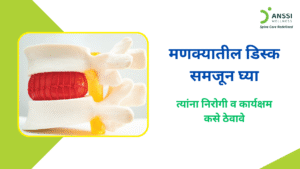Lower back pain is one of the most common health complaints worldwide, significantly impacting daily life and productivity. While factors like age and injury play a role, lifestyle choices—diet, exercise, and sleep—are critical to maintaining lower back health.
Understanding these factors can help you to prevent any future issues of back pain and promote long-term well-being.
Diet: The Backbone of Health
A nutritious diet is essential for maintaining a strong and healthy spine.
- Calcium and vitamin D such as milk, soybean, egg yolks, etc. are vital for bone health, helping to prevent conditions like osteoporosis, which increases the risk of fractures in the lower back.
- Anti-inflammatory foods, such as fruits, vegetables, nuts, and omega-3-rich fish, can alleviate inflammation in the spine and surrounding muscles.
- Hydration also plays a key role, as spinal discs require adequate water to maintain their cushioning and flexibility. Dehydration can cause discs to lose their ability to absorb shock, increasing the likelihood of chronic back pain.
Diets high in processed foods and sugar can exacerbate inflammation, leading to chronic back pain.
Exercise: Strengthening Core Support
Regular physical activity is crucial for a healthy lower back.
- Exercises that strengthen the core muscles, such as Pilates, yoga, or swimming, provide support to the spine and reduce strain.
- Stretching exercises improve flexibility, preventing stiffness that often leads to pain.
However, poor posture during activities and prolonged sedentary behaviour can harm the spine. Incorporating ergonomic practices, like using a supportive chair and taking frequent breaks, helps alleviate unnecessary strain on the lower back.
Sleep: Restoring the Spine
Quality sleep is another pillar of lower back health.
- Proper sleeping positions, such as lying on the side with a pillow between the knees, help maintain spinal alignment.
- A mattress with medium-firm support is recommended to keep the spine in a neutral position.
Lack of sleep not only contributes to stress and muscle tension but also slows the body’s natural healing process, exacerbating back pain.
Conservative Treatments for Chronic Back Pain
If your back pain persists for a few weeks, conservative treatments can offer relief.
Physical Therapy
A structured program designed by a therapist can strengthen the muscles supporting the spine, improve posture, and enhance flexibility. These targeted exercises reduce pain and prevent future issues.
Heat and Cold Therapy
Applying heat can relax tight muscles, while cold therapy reduces inflammation and numbs sharp pain. Alternating between the two can be particularly effective for managing chronic pain.
Massage Therapy
Therapeutic massage helps relax muscles, improve circulation, and release tension in the lower back.
Lifestyle Modifications
Maintaining a healthy weight reduces spinal stress. Practicing mindfulness and stress management techniques also helps minimize muscle tension linked to chronic pain.
Non-Surgical Spinal Decompression Treatment
This advanced form of treatment uses a motorised decompression table to treat chronic pain related to spinal disc-related conditions. This relieves pressure on spinal discs and promotes the flow of nutrients, oxygen, and water to facilitate healing.
About ANSSI:
ANSSI Wellness focuses on improving the quality of life for patients suffering from spinal issues, aiming to provide relief where other conventional treatments have failed. Through advanced non-surgical spinal decompression treatment, ANSSI is committed to helping patients avoid surgery and recover in a safe, effective, and compassionate environment.
Connect with ANSSI Wellness on LinkedIn, Instagram, and Facebook for expert guidance.



